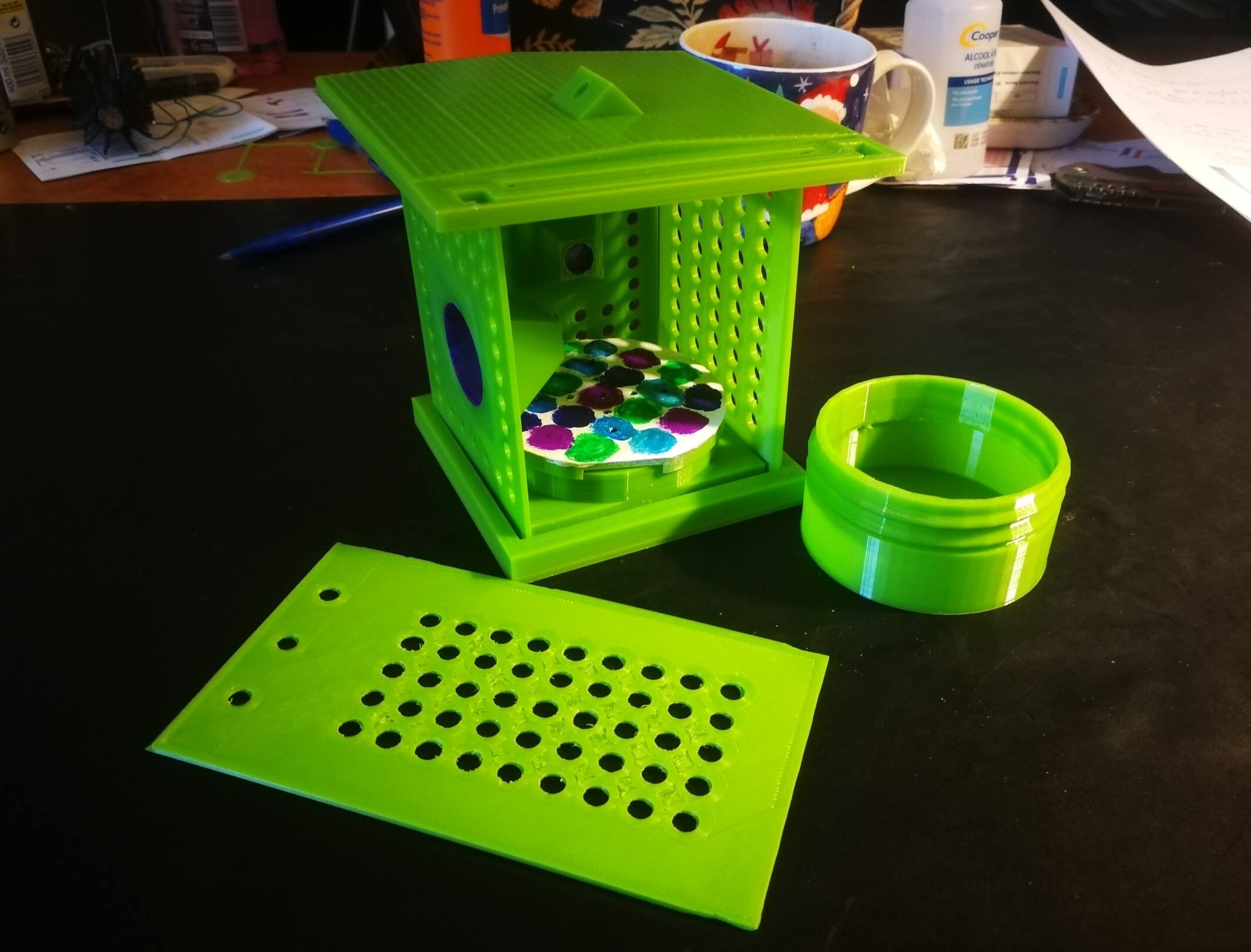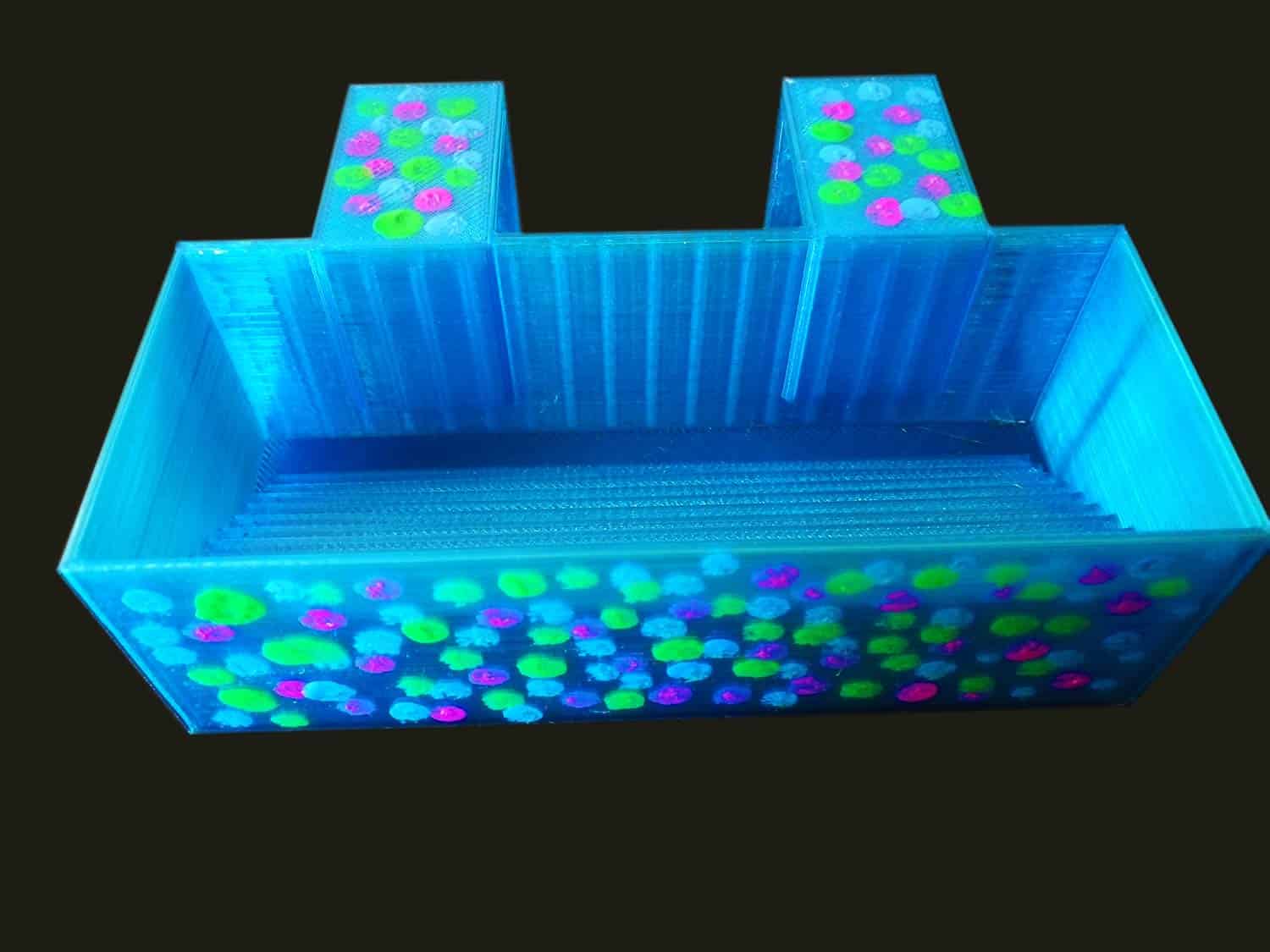Asian Hornet Trap: how to build a trap for Vespa Velutina
Guest article about Asian hornet traps by Dr. Alexandre Serain Shvaloff, 17.05.2021, Paris, France

1. Presentation
This trap against Asian Hornets reflects my admiration to the bees, to these intelligent insects. I live in France, in Paris and I am very sensitive to the massive bee loss in my country. Besides reasons related to the “way of thinking and organisation” in our societies, since 2004, Vespa velutina, the yellow legged Hornet, became one of the multiple problems that we cause to our lovely bees.
Before designing these traps, I studied two excellent texts among several scientific articles. One is the PhD thesis of Dr. Juliette Poidatz from Exeter University, UK, and the other is that of Dr. Antoine Couto from Bristol University, UK. A very shortlist of other references is proposed below but one can find much more on ResearchGate.
2. Motivation for an Asian hornet trap
Vepsa velutina came to France from China. The introduction in Europe seems to be an accident.
As we live in an open world, it has then migrated to Spain, Portugal and Italy.
Vespa velutina is an alien species lacking serious predators in order to re-establish an ecological equilibrium. Vespa velutina is a very aggressive species and predates mainly pollinators, especially honey bees causing ecological and economic problems.
In the absence of any socially and ecologically acceptable methods, the beekeepers created some disastrous conducts, trying to save their swarms.
For example, in order to capture Asian Hornets (some do even not know how to visually differentiate European Hornets, wasps and other pollinators etc. from Vespa velutina), some DIY traps or others sold in China for some pennies kill all the flying pollinators in a disgusting liquid of cleaning alcohol, vinegar, honey and all other unexpected stuff people thought “attractive” for Hornets.
Another method is worst. Captured Asian Hornets in a butterfly net, are spayed by a non-selective and highly toxic biocide powder.
Once released in the nature, people expect that they return to their hives and contaminate all other members.
The mortality of the sworn is observable in about 4-7 days. Meanwhile, powdered individuals fly, contact flowers, branches, herbs and dispatch the biocide agent around.
This causes a big mortality in all species in the nature which visited contaminated zones. YouTube is full of those videos with proudly shown trophies.
3. Current Project
My Asian hornet trap is non-lethal and mechanically selective for Vespa velutina.
The aim is not to kill any insect since we do not know any method doing the “job” by protecting other species.
Asian Hornets are captured in a house shape trap.

4.1 Holes in the Asian Hornet Trap
4.1.1. Entrance
The two entrance holes are designed after the comparative anatomical observations. The European Hornets (Vespa crabro) cannot comfortably go in and, unless someone strongly pushes them, do not spontaneously enter after the field observations since the circular entrance holes of 7.8mm diameter permits only to Asian Hornets penetrate in the trap. The traps for European Hornets need holes of 8.6mm diameter. Other flying pollinators like bees can enter easily in but escape out freely from holes all around the trap.
4.1.2 Escape holes
On the photos, you may notice several holes on all the faces. They are 5.5mm to 6.5mm, letting escape all other flying pollinators. They also permit the free air circulation and diffusing odour molecules in the air following the wind or air mouvements.
One face is removable to get living Asian hornet in a net. This allows the collection of Hornets for the research centres. Buying Asian Hornets from China instead of retrieving them from the nature seems to be a social and/or political problem for our Universities.
On the other hand, if neutralising them is suitable, it is easy to unscrew the reservoir, the tiny tank at the bottom and, immerse the trap in a water containing bucket.
4.1.3 Filter holes
The tiny tank (see photos) at the bottom is covered by a filter with about 3mm holes. These holes are conic in shape where their small surface is placed at the top site. This accelerates and fortify the movement of the escaping odour molecules from the tank to the air.
4.2 Colours
The colour pigments applied to the entrance holes and on the filter of the tiny tank correspond to the vision capabilities of Asian Hornets. We do not know for sure how multifaceted compound ayes see the environment. By biomimicry, some compound ayes are built for micro drones or military drones. This reflects how we imagine the vision of the compound ayes of the insects. However, installing the electrodes in order to record electrical activity of visual cells or nerves is one of the oldest neurophysiological techniques.
The visual system cells are activated from UV to green colours corresponding to about 350-450nm of wavelengths. Here we applied UV activated pigments together with the colours corresponding to the band of frequencies where activated the visual nerves (see photos).
4.3 Olfaction
The olfaction system of arthropods is well studied. As you see from the image, concerning the Asian Hornets, they statistically seem to be attracted mainly by odours of pollens, honey and the Bee Queen’s pheromones (Some commercial propositions exist under the label of Bee Boost – synthetic? – but nobody analysed the commercial product).

The trap proposes a compartment which could be screwed to the base. It may odour diffusers. Some are industrial, made of latex. I suggest an economical version: place a round floral foam. Introduce a mixture of honey, pollens, and strong alcohol like odourless vodka. You may also add some dead bees. Alcohol could be used as a diffuser of odours. While evaporating, it also conveys other flavours. We observed that honey bees avoid alcohol smell even if it was beer, wine or cheap whisky, which is not the case of Asian Hornets.
5. Conclusion
The trap model proposed hereby is non-lethal respecting and kindly with all pollinators. It is very easy to print with a 3D printer. I decided to make it “public” and licenced under the protection of “Creative Commons”. One can download all the files, freely modify, print etc. The only restriction is its commercial use which is not allowed.
It is printed with a PET filament (BASF Ultrafuse rPET). Please note that it is a kind of plastic. Living in an apartment in Paris, I do not possess a place for woodworking. If some of people are interested, I can collaborate with them constructing “public”, respectful for biodiversity and environment friendly traps.
6. You may visit my web page on this trap and click on “download” button to get all the 3D printable *.stl “machine” files : https://bit.ly/3eX55Wc



